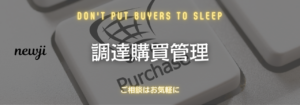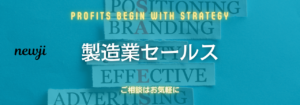- お役立ち記事
- Unveiling Japan’s Mastery in Zirconia Toughened Alumina (ZTA) Manufacturing: Innovation Meets Excellence

Unveiling Japan’s Mastery in Zirconia Toughened Alumina (ZTA) Manufacturing: Innovation Meets Excellence

目次
Introduction to Zirconia Toughened Alumina (ZTA) Manufacturing in Japan
Zirconia Toughened Alumina (ZTA) is a composite ceramic material renowned for its superior mechanical properties, making it a preferred choice in various industrial applications. Japan has emerged as a global leader in ZTA manufacturing, combining innovation with exceptional quality standards. This article delves into Japan’s mastery in ZTA production, exploring the procurement and purchasing strategies, supplier negotiation techniques, market conditions, and best practices that contribute to its excellence.
Understanding Zirconia Toughened Alumina (ZTA)
What is ZTA?
Zirconia Toughened Alumina is a composite material composed of aluminum oxide (alumina) reinforced with zirconia particles. This combination enhances the material’s toughness, fracture resistance, and overall mechanical strength, making it suitable for demanding applications such as cutting tools, medical implants, and automotive components.
Advantages of ZTA
ZTA offers several advantages over traditional ceramics:
– **Enhanced Toughness:** The addition of zirconia particles improves the material’s resistance to crack propagation.
– **High Wear Resistance:** ZTA maintains its integrity under abrasive conditions, extending the lifespan of components.
– **Biocompatibility:** Suitable for medical applications due to its inert nature.
– **Thermal Stability:** Capable of withstanding high temperatures without significant degradation.
Applications of ZTA
ZTA is utilized in a wide range of industries, including:
– **Aerospace:** Components that require high strength and durability.
– **Automotive:** Engine parts and wear-resistant components.
– **Medical:** Surgical tools and implantable devices.
– **Electronics:** Precision components that demand high reliability.
Japan’s Expertise in ZTA Manufacturing
Historical Development
Japan’s journey in ZTA manufacturing began in the late 20th century, driven by the nation’s emphasis on precision engineering and material science. Japanese manufacturers invested heavily in research and development, leading to significant advancements in composite ceramic technologies.
Technological Innovations
Japanese companies have pioneered several technological innovations in ZTA production:
– **Advanced Manufacturing Techniques:** Utilization of cutting-edge sintering processes to achieve superior material properties.
– **Quality Control Systems:** Implementation of rigorous quality assurance measures to maintain consistency and reliability.
– **Automated Production Lines:** Integration of automation to enhance efficiency and reduce production costs.
Quality Standards
Japan’s commitment to quality is reflected in its adherence to stringent manufacturing standards. Japanese ZTA manufacturers comply with international certifications such as ISO 9001, ensuring their products meet global quality benchmarks.
Procurement and Purchasing Strategies in Japan’s ZTA Industry
Supplier Selection Criteria
Selecting the right suppliers is crucial in the ZTA manufacturing process. Japanese companies prioritize:
– **Quality Assurance:** Suppliers must demonstrate consistent quality in raw materials.
– **Reliability:** Dependable delivery schedules and the ability to meet production demands.
– **Technological Capabilities:** Suppliers with advanced manufacturing technologies that align with the company’s standards.
– **Cost-Effectiveness:** Competitive pricing without compromising on quality.
Building Long-Term Relationships
Japanese firms emphasize building long-term partnerships with suppliers. This approach fosters mutual trust, encourages continuous improvement, and ensures stability in the supply chain.
Risk Management
Effective risk management strategies are employed to mitigate potential disruptions in the supply chain. This includes diversifying suppliers, maintaining safety stock, and developing contingency plans for unforeseen events.
Supplier Negotiation Techniques
Understanding Supplier Dynamics
Successful negotiations with Japanese suppliers require a deep understanding of their business culture and practices. Japanese suppliers value respect, patience, and a collaborative approach.
Win-Win Negotiation Approach
Japanese negotiation strategies often aim for mutually beneficial outcomes. This involves:
– **Open Communication:** Transparent discussions about expectations and requirements.
– **Flexibility:** Willingness to adapt terms to meet both parties’ needs.
– **Long-Term Vision:** Focusing on sustainable partnerships rather than short-term gains.
Leveraging Cultural Insights
Being aware of cultural nuances can enhance negotiation effectiveness. For example, understanding the importance of hierarchy and consensus in Japanese business culture can lead to more respectful and productive negotiations.
Market Conditions in Japan’s ZTA Industry
Current Market Trends
The ZTA market in Japan is influenced by several trends:
– **Technological Advancements:** Continuous innovation drives demand for high-performance ZTA materials.
– **Sustainability:** Increasing focus on environmentally friendly manufacturing processes.
– **Global Demand:** Rising international demand for ZTA products in various industries.
Competitive Landscape
The Japanese ZTA market is characterized by intense competition among established manufacturers and emerging players. Companies compete on factors such as quality, innovation, and customer service to gain market share.
Economic Factors
Economic stability in Japan supports the growth of the ZTA industry. However, global economic fluctuations can impact export demand and raw material costs, necessitating adaptive strategies.
Best Practices in Procurement and Purchasing for ZTA Manufacturing
Strategic Sourcing
Implementing strategic sourcing practices helps companies optimize their procurement processes. This includes:
– **Market Analysis:** Understanding global supply and demand dynamics.
– **Supplier Diversification:** Reducing dependency on single suppliers to enhance supply chain resilience.
– **Total Cost of Ownership:** Considering all costs associated with procurement, including logistics, tariffs, and quality management.
Collaboration and Communication
Effective collaboration with suppliers enhances procurement efficiency. Regular communication ensures alignment of goals, timely resolution of issues, and continuous improvement in processes.
Embracing Technology
Leveraging technology tools such as ERP systems, supply chain management software, and data analytics can streamline procurement operations, improve accuracy, and provide valuable insights for decision-making.
Advantages of Sourcing ZTA from Japan
High-Quality Standards
Japanese manufacturers are renowned for their unwavering commitment to quality. This ensures that ZTA products sourced from Japan meet the highest standards of performance and reliability.
Advanced Technology
Japan’s investment in research and development translates into cutting-edge manufacturing technologies. This results in superior ZTA materials with enhanced properties tailored to specific applications.
Reliable Supply Chain
The efficiency and reliability of Japan’s supply chain infrastructure minimize lead times and ensure consistent availability of ZTA products, which is critical for maintaining production schedules.
Innovation and Continuous Improvement
Japanese companies continuously seek to improve their products and processes. This culture of innovation ensures that clients receive the latest advancements in ZTA technology.
Disadvantages of Sourcing ZTA from Japan
Higher Costs
While the quality of Japanese ZTA is exemplary, it often comes at a higher price point compared to other regions. This can impact overall procurement budgets, especially for cost-sensitive projects.
Language and Cultural Barriers
Navigating language differences and cultural nuances can pose challenges in communication and negotiation, potentially leading to misunderstandings or delays.
Longer Lead Times
Importing ZTA from Japan may involve longer lead times due to shipping distances and logistical complexities, which can affect project timelines.
Dependence on Exchange Rates
Fluctuations in currency exchange rates can influence the cost of sourcing ZTA from Japan, adding an element of financial unpredictability.
Effective Supplier Relationship Management
Establishing Clear Communication Channels
Maintaining open and transparent communication with suppliers is essential for effective relationship management. This ensures that both parties are aligned on expectations, timelines, and quality standards.
Performance Monitoring
Regularly assessing supplier performance through key performance indicators (KPIs) helps identify areas for improvement and ensures that suppliers consistently meet contractual obligations.
Collaborative Problem Solving
Engaging suppliers in collaborative problem-solving fosters a sense of partnership. This approach facilitates the resolution of issues in a manner that benefits both parties and strengthens the overall relationship.
Continuous Improvement Initiatives
Encouraging suppliers to participate in continuous improvement initiatives leads to enhancements in quality, efficiency, and innovation, driving mutual growth and success.
Case Studies: Success Stories in Japanese ZTA Procurement
Automotive Industry Partnership
A leading automotive manufacturer partnered with a Japanese ZTA supplier to develop wear-resistant engine components. Through collaborative research and development, they achieved significant improvements in component lifespan and performance, resulting in enhanced vehicle reliability.
Medical Device Innovation
A medical device company sourced ZTA from a Japanese manufacturer to produce surgical tools. The high precision and biocompatibility of Japanese ZTA enabled the creation of advanced medical instruments, gaining trust and approval from healthcare professionals worldwide.
Future Outlook for Japan’s ZTA Manufacturing
Technological Advancements
Japan is poised to continue its leadership in ZTA manufacturing through ongoing technological advancements. Innovations such as nano-scale ZTA production and enhanced material properties are expected to drive future growth.
Global Expansion
Japanese ZTA manufacturers are expanding their global footprint, establishing production facilities and partnerships in key markets to better serve international clients and respond to global demand.
Sustainability Initiatives
With increasing emphasis on sustainability, Japanese manufacturers are adopting eco-friendly production methods and exploring recyclable materials, aligning with global sustainability goals and market expectations.
Emerging Applications
The versatility of ZTA opens doors to new applications in emerging industries such as renewable energy, advanced electronics, and biotechnology. Japan’s innovative approach ensures that ZTA remains at the forefront of material science advancements.
Conclusion
Japan’s mastery in Zirconia Toughened Alumina manufacturing is a testament to its unwavering commitment to quality, innovation, and excellence. Through strategic procurement and purchasing practices, effective supplier negotiation techniques, and a focus on continuous improvement, Japanese manufacturers have established themselves as global leaders in the ZTA industry. While there are challenges associated with sourcing ZTA from Japan, the advantages of superior quality, advanced technology, and reliable supply chains make it a compelling choice for businesses seeking high-performance ceramic materials. As the industry evolves, Japan’s dedication to technological advancements and sustainability will continue to drive the success and global prominence of its ZTA manufacturing sector.
 資料ダウンロード
資料ダウンロード
QCD管理受発注クラウド「newji」は、受発注部門で必要なQCD管理全てを備えた、現場特化型兼クラウド型の今世紀最高の受発注管理システムとなります。
 NEWJI DX
NEWJI DX
製造業に特化したデジタルトランスフォーメーション(DX)の実現を目指す請負開発型のコンサルティングサービスです。AI、iPaaS、および先端の技術を駆使して、製造プロセスの効率化、業務効率化、チームワーク強化、コスト削減、品質向上を実現します。このサービスは、製造業の課題を深く理解し、それに対する最適なデジタルソリューションを提供することで、企業が持続的な成長とイノベーションを達成できるようサポートします。
 製造業ニュース解説
製造業ニュース解説
製造業、主に購買・調達部門にお勤めの方々に向けた情報を配信しております。
新任の方やベテランの方、管理職を対象とした幅広いコンテンツをご用意しております。
 お問い合わせ
お問い合わせ
コストダウンが利益に直結する術だと理解していても、なかなか前に進めることができない状況。そんな時は、newjiのコストダウン自動化機能で大きく利益貢献しよう!
(β版非公開)






